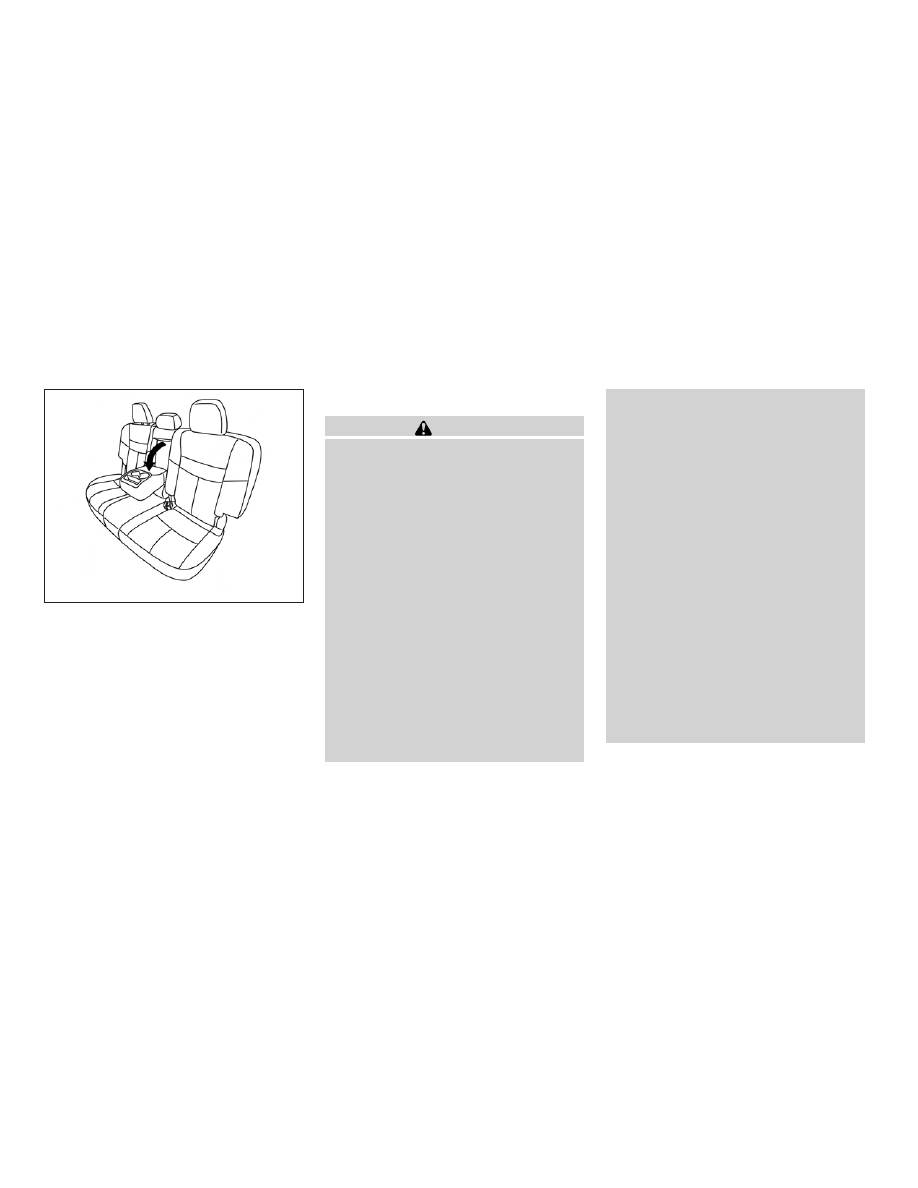Nissan Murano Hybrid (2016 year). Manual - part 3

ARMRESTS
The rear bench center armrest is locked in the up
position. To lower the armrest, pull the armrest
down.
To return the armrest to the up position, push up
on the armrest until it is in the full up position.
FLEXIBLE SEATING
WARNING
● Never allow anyone to ride in the cargo
area or on the rear seats when they are
in the fold-down position. In a collision,
people riding in these areas without
proper restraints are more likely to be
seriously injured or killed.
● Do not allow people to ride in any area
of your vehicle that is not equipped with
seats and seat belts. Be sure everyone
in your vehicle is in a seat and using a
seat belt properly.
● Do not allow more than one person to
use the same seat belt.
● Do not fold down the rear seats when
occupants are in the rear seat area or
any luggage is on the rear seats.
– Make sure that the seat path is clear
before moving the seat.
– Be careful not to allow hands or feet
to get caught or pinched in the seat.
● Head restraints/headrests should be
adjusted properly as they may provide
significant protection against injury in
an accident. Always replace and adjust
them properly if they have been re-
moved for any reason.
● If the head restraints/headrests are re-
moved for any reason, they should be
securely stored to prevent them from
causing injury to passengers or damage
to the vehicle in case of sudden braking
or an accident.
● When returning the seatbacks to the
upright position, be certain they are
completely secured in the latched posi-
tion. If they are not completely secured,
passengers may be injured in an acci-
dent or sudden stop.
● Properly secure all cargo to help pre-
vent it from sliding or shifting. Do not
place cargo higher than the seatbacks.
In a sudden stop or collision, unsecured
cargo could cause personal injury.
LRS2588
1-6
Safety—Seats, seat belts and supplemental restraint system